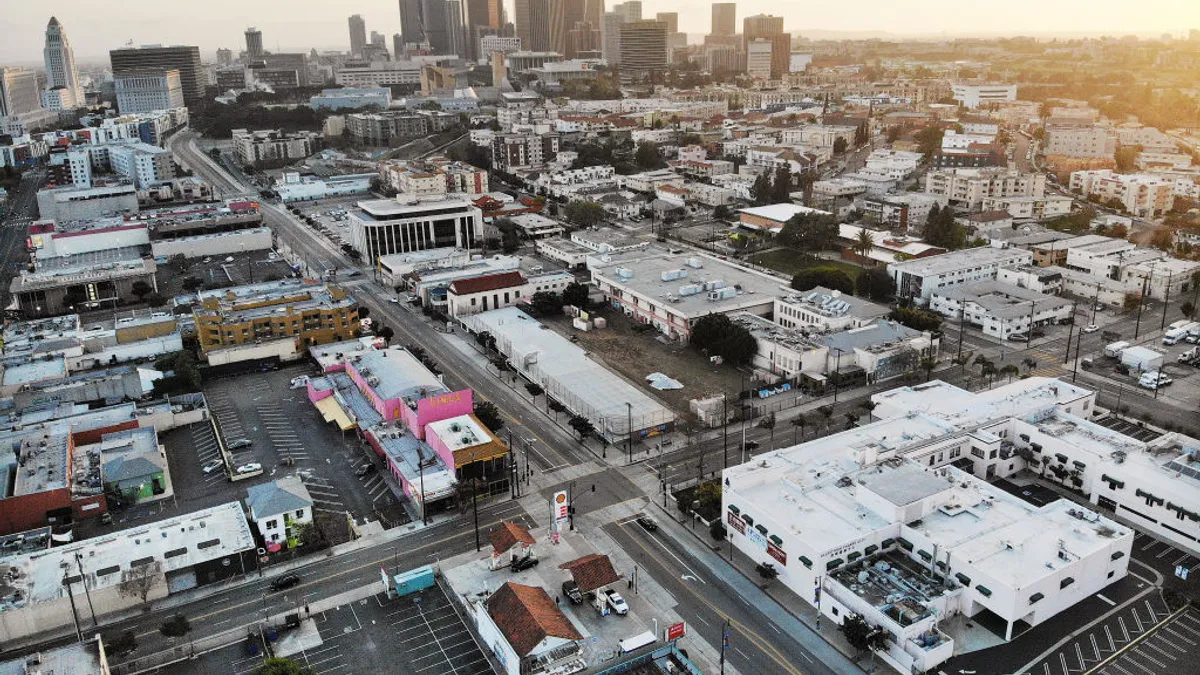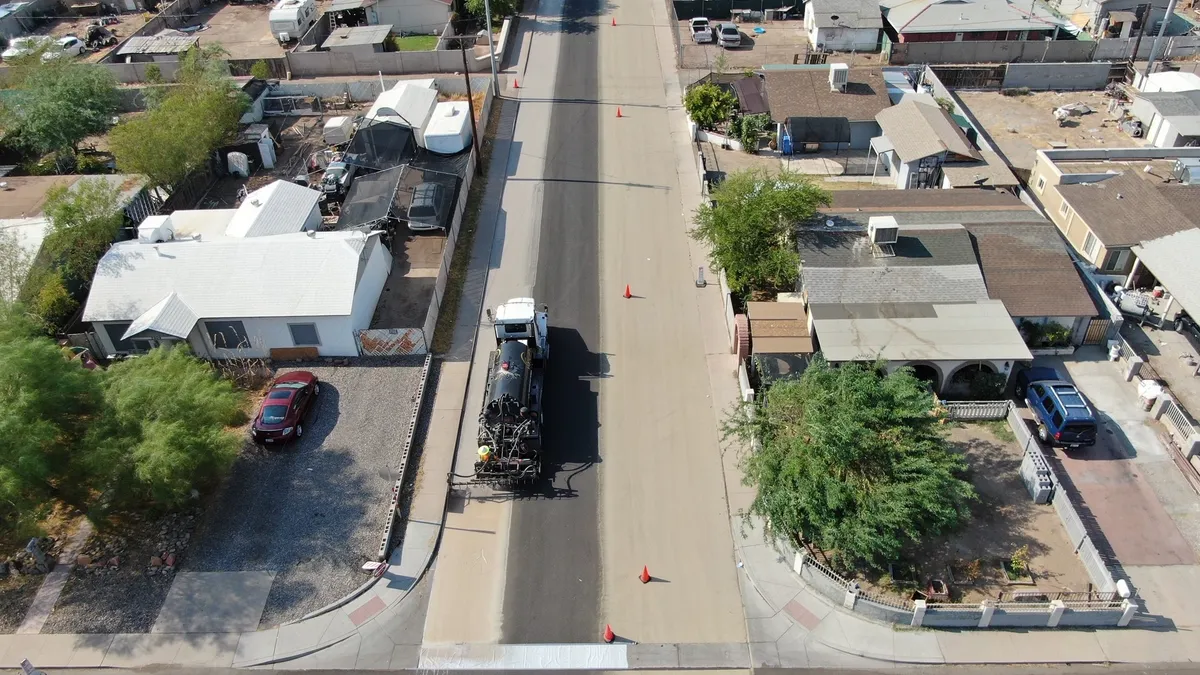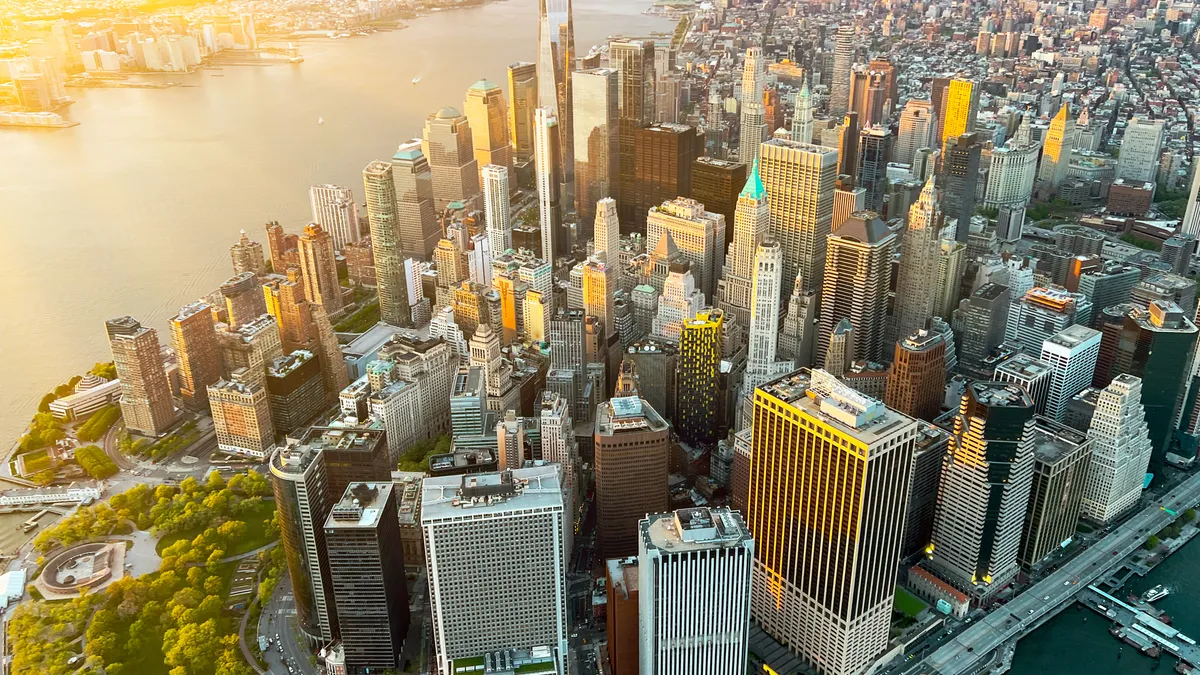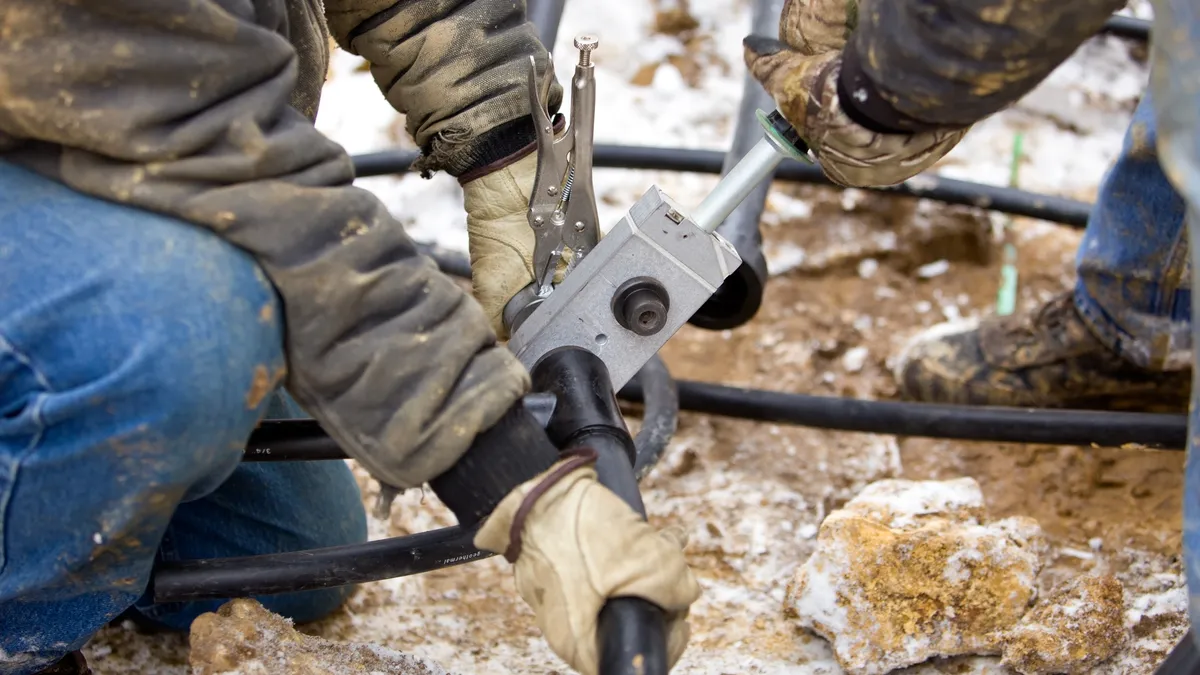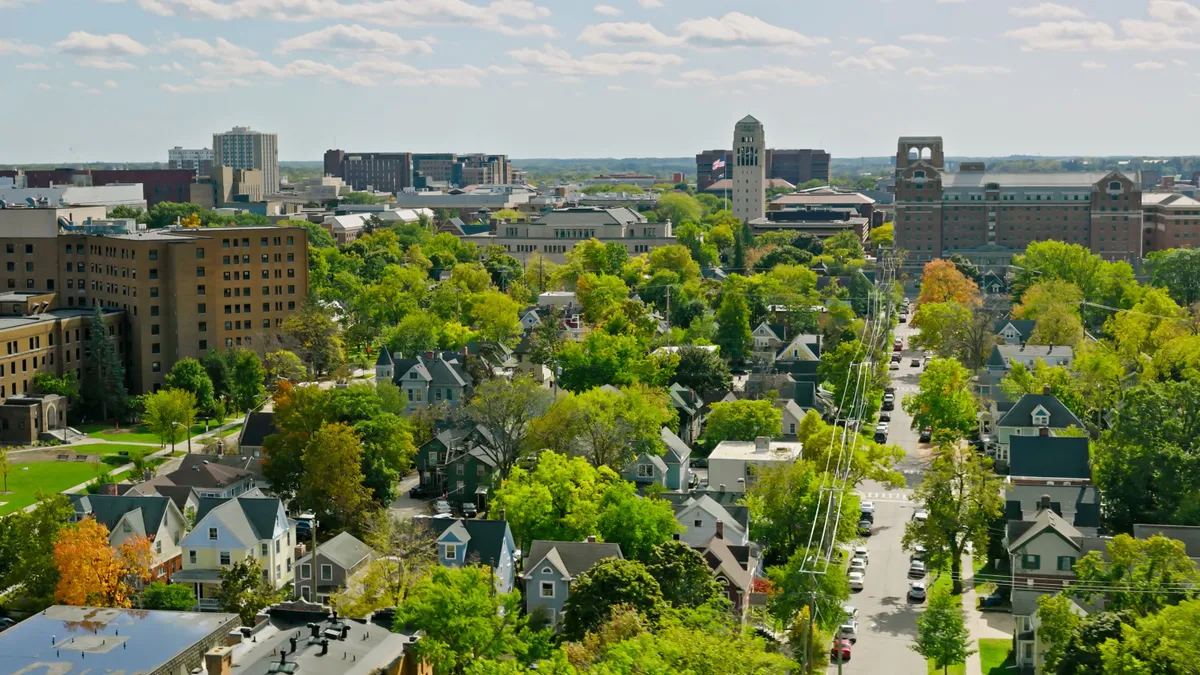Buckling roads and melting streetcar cables during the record high temperatures in the Pacific Northwest illustrate that “heat wave” is a buzz word this summer, and scientists blame climate change. The heat waves exacerbate the urban heat island effect, in which city temperatures are several degrees hotter than their surrounding areas largely due to manmade infrastructure like buildings and roads absorbing and re-emiting the sun's heat. Many cities aren’t sitting idly by: They’re implementing cooling measures to improve health, safety, resilience and livability.
Cooling concepts
Recent research on urban heat islands has brought increased awareness to the effects it has on residents and wildlife, its ties to climate change and the actions that could help cities lessen the hazards.
Bangor, Maine; Chicago; Denver; and Portland, Oregon are among the slew of cities turning to the short-term solution of setting up cooling centers to offer residents relief during heat waves and reduce the risk of excessive heat-related health incidents. But cooling centers don't reduce a city's heat intensity. Many cities are implementing long-term strategies to reduce the urban heat island effect by rethinking and reworking future development and adding natural or built infrastructure to cities: trees and green spaces, green roofs, reflective "cool roof" coatings and "cool pavement."
In 2015, Los Angeles tested a light gray pavement coating on a city parking lot that reflects more sunlight than dark asphalt. The cool pavement absorbs less heat to keep street surface temperatures cooler, sometimes by dozens of degrees. After launching another pilot in 2017 in residential neighborhoods, L.A. saw surface temperatures drop 10-20 degrees in areas with the cool pavement.
Los Angeles was one of the first cities in the U.S. to pilot cool pavement at "a reasonable scale," said Kurt Shickman, executive director of the Global Cool Cities Alliance. The city also installed new manmade and natural shade coverings, provided access to potable water and identified not just where it's hot but where people are actually spending time outside, he said.
“They've done a nice job of looking at where people are walking in Los Angeles... and thinking through what kind of passive cooling measures could be applied in areas where people congregate or are walking to reduce heat stress," Shickman said.
Phoenix is currently running a cool pavement pilot and anticipates publishing preliminary results by the end of this year. Phoenix is also in the process of updating its climate action plan, which includes a section dedicated to heat. Strategies include increasing shade overall and creating a network of 30 "cool corridors" in vulnerable communities by 2030 with more shade along specified routes that people travel between home, work and entertainment.
The heat problem seems similar across cities when looking at the raw temperature disparities, but heat island causes differ by location. The news organization Climate Central released a report this summer listing the top 20 U.S. cities for urban heat intensity, including key causes for each city: population density, impermeable surfaces, building height and how well surfaces reflect light. It also included an index score comparing the potential difference in a city’s temperature and its non-urban surroundings. New Orleans ranked the highest with a nearly 9-degree disparity. Newark, New Jersey; New York City; Houston; and San Francisco round out the cities with the highest index scores, all of which were more than 7 degrees hotter than surrounding communities.
"I think a lot of people... were a bit surprised to see New Orleans topping the list," said Michael Karam, director of New Orleans' parks and parkways department. "But anyone who has a good appreciation of the history of New Orleans — and especially the development patterns — can appreciate that part of that was the result of the densely populated urban grid. It's an old city that was laid out with narrow streets and smaller parcel sizes. We don't have significant green spaces around structures."
Numerous city departments are working on initiatives to mitigate heat, and Karam's department focuses on increasing the city's tree canopy and green infrastructure.
Heat isn't solely a problem in traditionally warm western and southern cities. It actually could be considered an even greater threat in northern climates, Shickman said.
"If you look at Phoenix or another city in the Southwest, the penetration of air conditioning is pretty high, even in low income communities, because they're always hot. The buildings are adapted to it," he said. "If you go to Portland or Chicago… these are communities where buildings aren't built for heat and their bodies are not prepared for the heat."
More than 200 people died from heat-related causes in Oregon and Washington during June’s unprecedented temperatures. More than 700 people, most of whom were elderly and low-income, died when a triple-digit heat wave swept Chicago for five days in 1995.
"That heat wave wouldn't even be a blip in Phoenix or Tucson, but it killed almost 800 people in Chicago," Shickman said. "Adaptation and resilience is more critical in some of our Northern places because of that dynamic. And we're seeing in all of those places that the frequency of heat waves and the actual temperatures will continue to rise."
Chicago’s deadly 1995 heat wave prompted action, though. In 2001, the city passed an urban heat island ordinance that included measures like a cool roof law — one of the first in the country — requiring the roofs of many buildings to have a certain amount of reflectivity or vegetation to improve energy efficiency and reduce building heat.
Extreme events are prompting action elsewhere, too. Houston Mayor Sylvester Turner ramped up efforts to address the effects of climate change after Hurricane Harvey hammered the city in 2017, causing the worst flooding event in its history, explained Lara Cottingham, Houston's chief sustainability officer.
"In Texas, talking about climate change has been a challenge. But we've seen drastic change over the last three years," Cottingham said. "Hurricane Harvey was the point when everything changed."
Last year the city unveiled its Resilient Houston plan to improve the city's ability to withstand and bounce back from shocks and stresses. Part of it addresses making neighborhoods greener and cooler to combat extreme heat.
Houston is also one of 13 U.S. cities that took on a large heat mapping initiative last year "to pinpoint and visually show the differences in temperature across our region and to show how that's connected to neighborhoods and urban planning and design," Cottingham said.
Heat mapping — using sensors, software and other technologies to create a visual representation of temperatures across a region — has boomed in popularity among city planners in recent years, and its use is evolving.
"I think we've been through a phase where everyone was doing heat vulnerability mapping," Shickman said. "The first phase was: Where are we hot and where do we have people who are vulnerable to heat? Now we're seeing a more nuanced approach, which is: Where are people outside? Where are people actually engaging with hot temperatures both inside and outside?"
Continuing to adapt
No matter where cities are in their process of implementing urban heat island mitigation strategies, experts say, it is a work in progress that changes over time.
"When you think about the built environment, we're talking about 75- to 100-year assets. We're building our cities for climates we used to have, not what we're going to have," Shickman said.
Future anticipated impacts from climate change influence which trees New Orleans chooses to plant, considering temperatures and water availability are not static.
"The types of trees we plant are not limited to native species because we recognize that over time with increasing temperatures there are other species that may be better suited to this changing climate," Karam said. "It's not a quick fix and trees take time to mature, but the benefits of trees are not only on reducing the heat island effect, they're multifaceted — stormwater benefits, air quality and quality of life."
Plus, there are challenges surround efforts to adapt the public's views and get them on board with participating in heat mitigation strategies. Houston is trying a holistic approach that encourages collaboration and action from businesses, nonprofits, residents and the city.
"Heat is the silent threat so it's harder to get folks engaged and preparing for something that is going to get worse when they don't see it," Cottingham said. "It's a huge challenge because a city and a mayor have control over some things but not everything... Whether you are a middle school student or a multinational corporation, there is something that everyone can do to help us reach our goals and reach them as quickly as possible."



